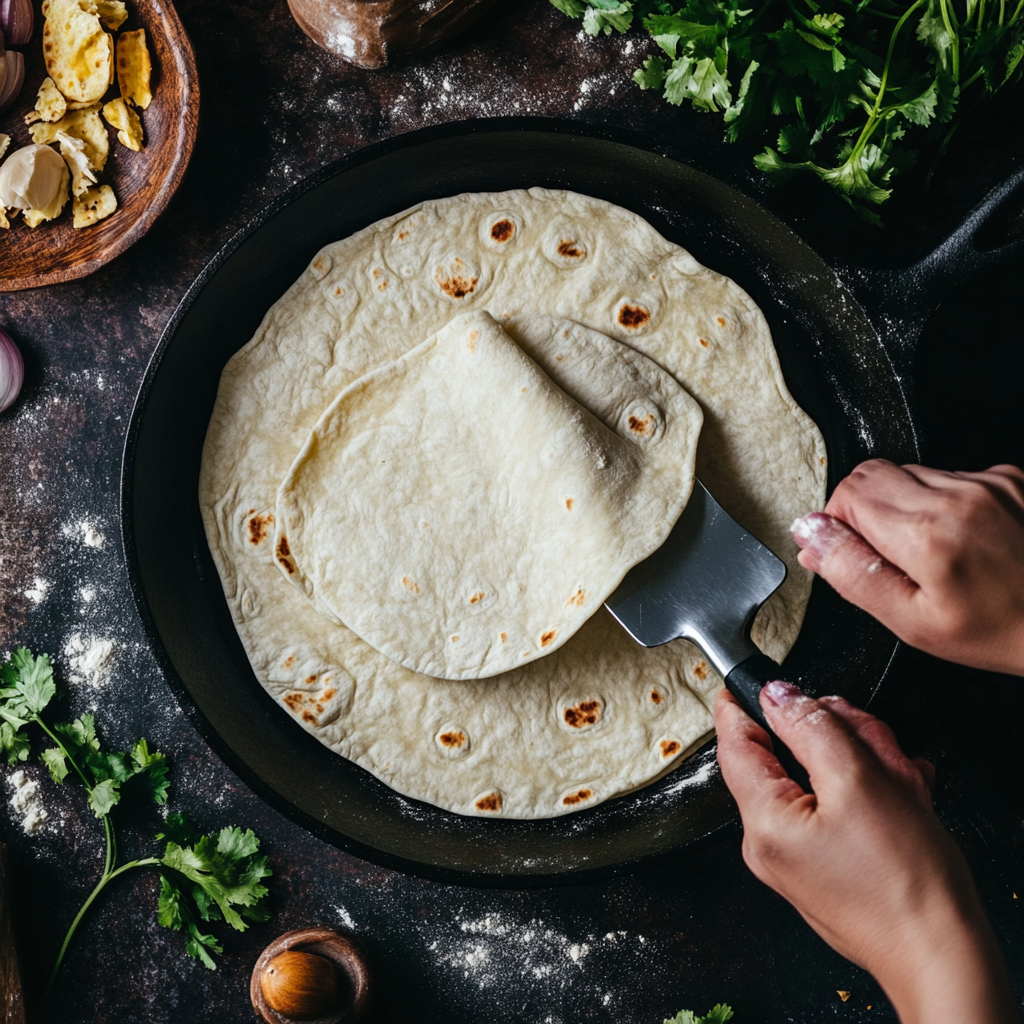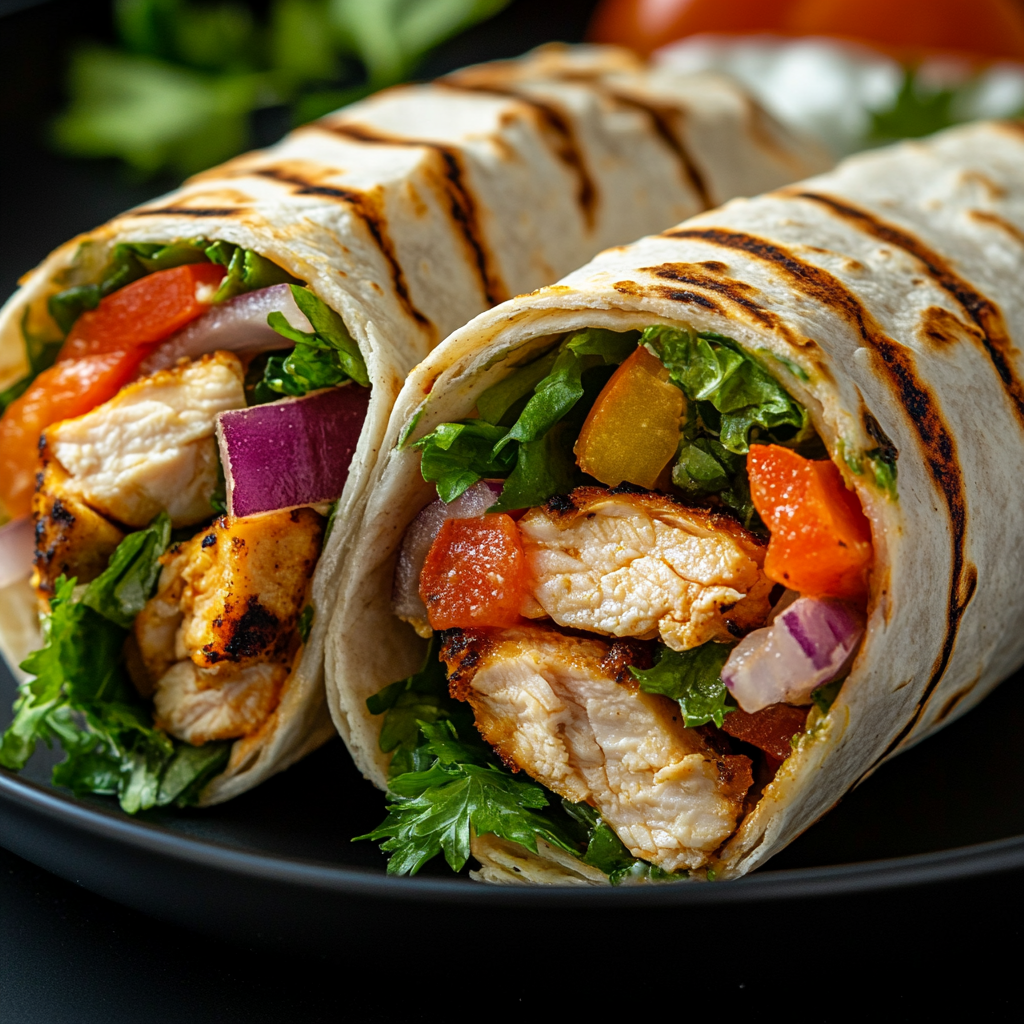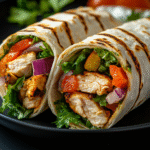Why I Started Making High Protein Tortillas
Hi! I’m Alice—so happy you’re here. My love for cooking began in my family’s kitchen, where the scent of fresh tortillas off the griddle always made the house feel warm and alive. My grandma would roll them by hand while telling stories about her youth, and I’d sneak pieces of dough while pretending to help. Back then, we didn’t think about things like protein content or macros—just taste and tradition.
But as I got older and began focusing more on my health, I found myself torn between nostalgia and nutrition. I still craved the softness of a warm tortilla, but I wanted something more sustaining—especially after workouts or during busy days. That’s when I started experimenting with high protein tortillas. At first, I tried every store-bought version I could find, from almond flour wraps to whey-enhanced varieties. Some were dry, others chewy, and a few actually surprised me with their balance of texture and flavor.
I realized that most store-bought versions, while convenient, just didn’t hit the spot like homemade ones did. So I went back to the basics and developed a recipe that married the warmth of tradition with the fuel my body needed. It was a game-changer.
Today, these high protein tortillas are a staple in my kitchen. They’re versatile, easy to make, and—most importantly—they make me feel good about what I’m eating. Whether you’re prepping meals for the week or just want a better wrap for your chicken Caesar, these tortillas are your new go-to.
If you’re also into better-for-you cooking, you might love my take on low carb meal prep ideas or explore homemade tortilla options to compare.
Table of Contents
What Makes a High Protein Tortilla
Ingredients That Add a Protein Punch

To understand what sets a high protein tortilla apart, we have to look at the base ingredients. Traditional tortillas are mostly made from white flour or cornmeal—delicious, but low in protein and fiber. A high protein tortilla, however, relies on alternative flours and boosters like egg whites, flaxseed, pea protein, or Greek yogurt to raise the protein content without compromising flexibility.
Some common protein-enhancing ingredients include:
- Almond flour: Rich in protein, fiber, and healthy fats
- Chickpea flour: Earthy flavor, gluten-free, and packs 6g protein per ¼ cup
- Whey or pea protein isolate: Excellent for boosting grams without affecting texture
- Ground flax or chia seeds: Add protein, Omega-3s, and moisture
- Vital wheat gluten: A strong binder that significantly boosts protein content
These ingredients don’t just raise nutrition—they also improve the texture and elasticity of homemade protein tortillas. For anyone following a low-carb or high-protein lifestyle, the right mix can completely transform an everyday wrap into a smart, satisfying meal foundation.
If you’re experimenting in the kitchen, check out my guide on protein-packed snacks for inspiration or see how gluten-free wraps compare to your homemade versions.
Nutrition Breakdown Compared to Traditional Tortillas
Let’s see how a high protein tortilla stacks up nutritionally:
| Tortilla Type | Calories | Protein (g) | Carbs (g) |
|---|---|---|---|
| White Flour Tortilla | 140 | 3 | 24 |
| Whole Wheat Tortilla | 130 | 4 | 22 |
| High Protein Tortilla (Homemade) | 120 | 12 | 10 |
Clearly, the high protein tortilla isn’t just trendy—it delivers real nutritional benefits, especially for those aiming to reduce carbs and increase satiety.
Making your own high protein tortilla is easier than it sounds—and so much more rewarding. Once you nail down the base recipe, you can customize flavors and tweak macros to suit your dietary goals.
Here’s a simple base recipe to start with:
Ingredients:
- 1 cup almond flour
- ¼ cup unflavored whey protein isolate
- 1 tbsp ground flaxseed
- 1 egg
- 2 tbsp olive oil
- 2–4 tbsp water (as needed)
- Pinch of salt
Instructions:

- Mix dry ingredients (almond flour, whey, flaxseed, salt) in a bowl.
- Whisk egg and olive oil in a separate bowl, then stir into dry mix.
- Slowly add water until dough forms—not sticky, but pliable.
- Let the dough rest for 10 minutes to improve elasticity.
- Divide into 4 balls. Roll each one thinly between parchment paper or use a tortilla press.
- Heat a cast iron skillet over medium heat. Cook each tortilla for 45 seconds per side or until golden and slightly puffy.
Tips for success:
- Roll them evenly to avoid thick centers and burnt edges
- Don’t overcook—they dry out quickly
- Add chopped herbs or spices for a flavor twist
Once you’ve tried this, explore low carb vs whole wheat tortillas to decide what suits your pantry and taste best. You can also check out healthy tortilla wraps for wrap-filling inspiration.
Storage, Freezing, and Reheating Tips
Homemade tortillas don’t have preservatives, so proper storage is key.
Refrigeration: Wrap tightly in foil or reusable silicone bags. Lasts up to 5 days.
Freezing: Place parchment paper between tortillas and freeze in stacks inside freezer-safe bags. Use within 2 months.
Reheating: Warm in a dry skillet for 15–30 seconds per side, or microwave for 10 seconds covered in a damp paper towel to restore moisture.
Pro tip: make a double batch and freeze half for quick lunches or wraps during the week.
Using High Protein Tortillas in Your Meals
Quick Meal Ideas Using High Protein Tortillas

One of the best things about a high protein tortilla is how well it fits into any meal of the day. Once you’ve made a batch, you’ll find countless ways to put them to work.
Here are some of my go-to recipes:
- Breakfast Wrap: Scrambled eggs, spinach, turkey sausage, and hot sauce
- Chicken Caesar Wrap: Grilled chicken, romaine, parmesan, Greek yogurt Caesar dressing
- Veggie Quesadilla: Bell peppers, onions, black beans, a sprinkle of low-fat cheese
- Tuna Melt Roll-Up: Tuna salad, sliced pickles, melted cheddar, lightly grilled
These wraps are not just tasty—they’re balanced, high in protein, and often lower in carbs than the average sandwich or burrito. That makes them ideal for anyone following high-protein, low-carb, or diabetic-friendly meal plans.
For more ideas, check out my post on meal prep tips, or explore high protein recipes if you’re planning a full menu.
Are Protein Tortillas Healthy? Pros and Cons
So, are these tortillas actually healthy? The short answer is—yes, but with nuance.
Pros:
- Higher protein content means better satiety and muscle support
- Many are low carb and high fiber, making them blood sugar–friendly
- Homemade versions can skip preservatives and refined flour
- They support balanced macros in wraps, snacks, and meals
Cons:
- Some commercial versions contain additives or artificial fibers
- Low-fat or overly processed versions may compromise flavor and texture
- Those with gluten sensitivity should choose carefully if vital wheat gluten is used
When made at home with real ingredients like almond flour, flax, or protein powder, high protein tortillas can absolutely be part of a healthy lifestyle. Just like with anything, read your labels—or better yet, make them yourself.
Conclusion
Whether you’re counting macros, cutting carbs, or just craving something more satisfying, high protein tortillas offer a delicious way to upgrade your meals. They’re easy to make, fun to customize, and versatile enough for everything from breakfast to dinner. Plus, they fit beautifully into meal prep plans and healthy lifestyles. Start with a simple homemade recipe and build from there—you’ll never look at wraps the same way again.
If you’re inspired to try more protein-rich cooking, don’t miss my high protein recipes and healthy tortilla wrap ideas to keep the creativity flowing.
for more recipes follow me in page facebook and pinterest .
FAQs
Which tortilla has more protein?
High protein tortillas—especially homemade or premium store-bought brands—typically have 10–12 grams of protein per serving, compared to 2–4 grams in standard flour or corn tortillas. Look for varieties made with whey protein, chickpea flour, or flaxseed for the highest protein content.
Is protein tortilla healthy?
Yes, a high protein tortilla can be very healthy—especially when made with whole ingredients like almond flour, flaxseed, or pea protein. They offer more satiety, muscle-supporting protein, and often fewer carbs. Watch for additives or artificial fibers in store-bought versions.
Which tortilla is the healthiest?
The healthiest tortilla depends on your goals. For protein and blood sugar control, a homemade high protein tortilla is hard to beat. For fiber and whole grains, a whole wheat option works well. Always check the nutrition label for hidden sugars and filler ingredients.
What are the ingredients in high protein tortillas?
Common ingredients include almond flour, chickpea flour, pea protein, egg whites, Greek yogurt, flaxseed, and sometimes vital wheat gluten. These add protein and structure while keeping the tortilla soft and flexible. Homemade versions let you control the mix completely.

High Protein Tortilla Recipes: Easy, Healthy & Delicious Ideas
- Total Time: 20 mins
- Yield: 4 tortillas 1x
Description
These high protein tortillas are soft, flavorful, and easy to make—perfect for wraps, quesadillas, and more!
Ingredients
1 cup almond flour
¼ cup unflavored whey protein isolate
1 tbsp ground flaxseed
1 egg
2 tbsp olive oil
2–4 tbsp water
Pinch of salt
Instructions
1. Mix dry ingredients in a bowl.
2. Whisk egg and oil, then add to dry ingredients.
3. Add water slowly until dough forms.
4. Rest dough for 10 minutes.
5. Divide and roll out dough into circles.
6. Cook in skillet for 45 seconds per side.
7. Let cool and store or serve.
Notes
Add herbs like parsley or cumin for flavor.
Use parchment paper when rolling for easier handling.
Store in the fridge up to 5 days or freeze.
- Prep Time: 10 mins
- Cook Time: 10 mins
- Category: Wraps
- Method: Skillet
- Cuisine: Healthy
Nutrition
- Serving Size: 1 tortilla
- Calories: 120
- Sugar: 1g
- Sodium: 190mg
- Fat: 8g
- Saturated Fat: 1g
- Unsaturated Fat: 6g
- Trans Fat: 0g
- Carbohydrates: 10g
- Fiber: 4g
- Protein: 12g
- Cholesterol: 40mg

